

Further Investigation of equations of the form ax2 + bx + c = y
by
Jackie Ruff
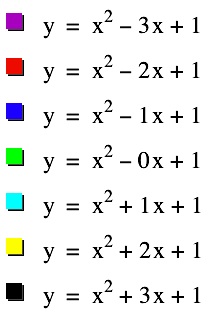 | 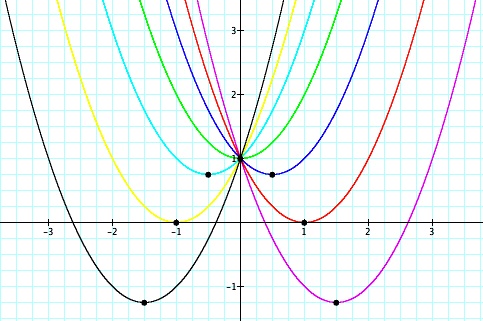 | It appears that the vertices are also following the path of a parabola, opening downward with a vertex at (0,1). |

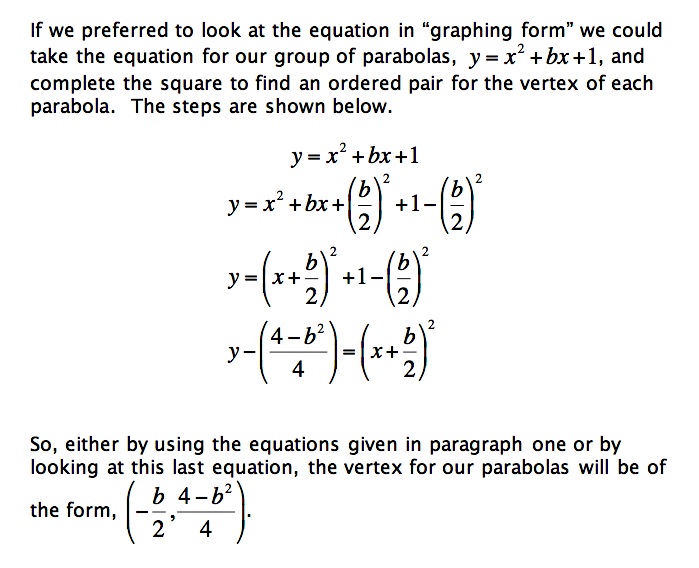
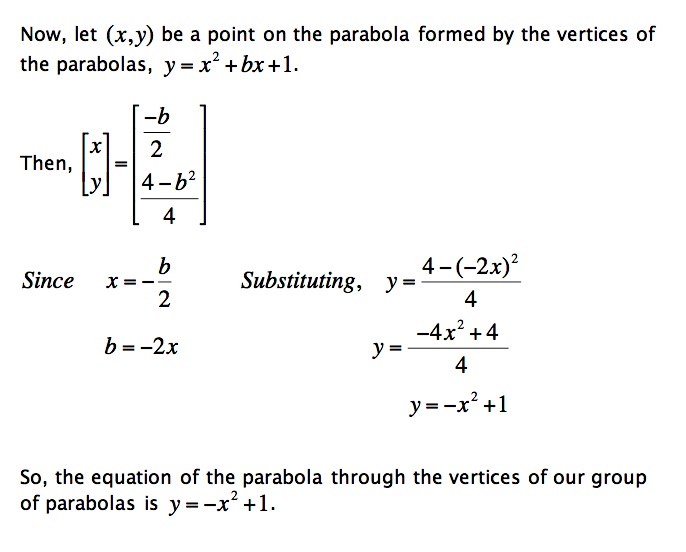
| If we graph this equation with our group of parabolas, it appears that we have found the correct equation. | 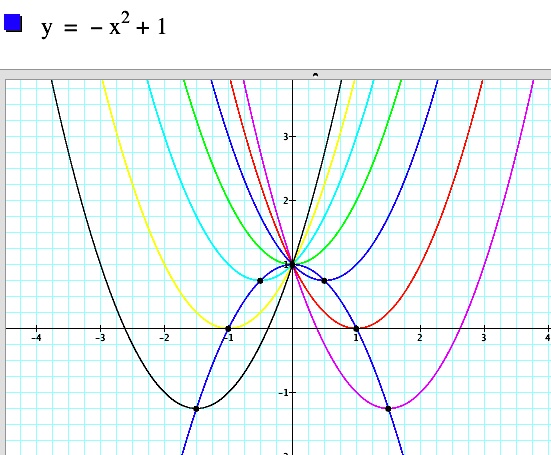 |
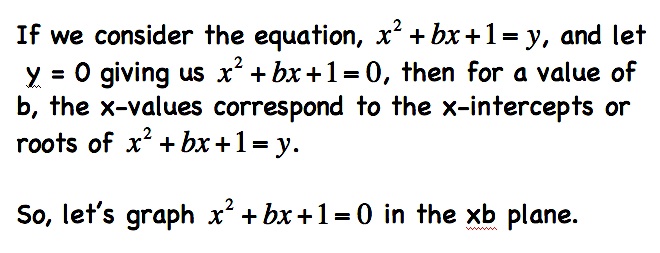 |  |
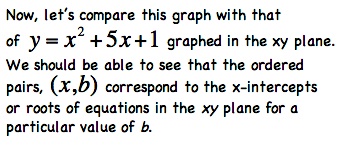 | 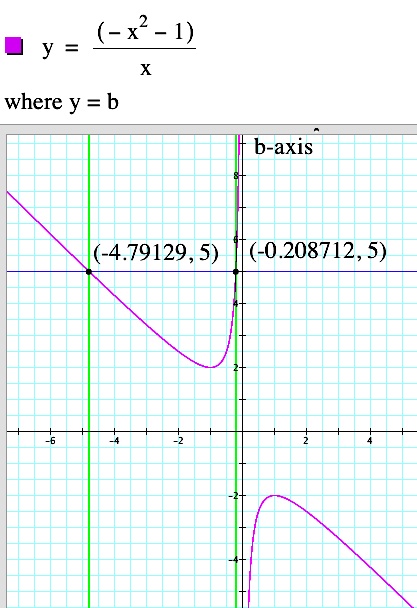 | 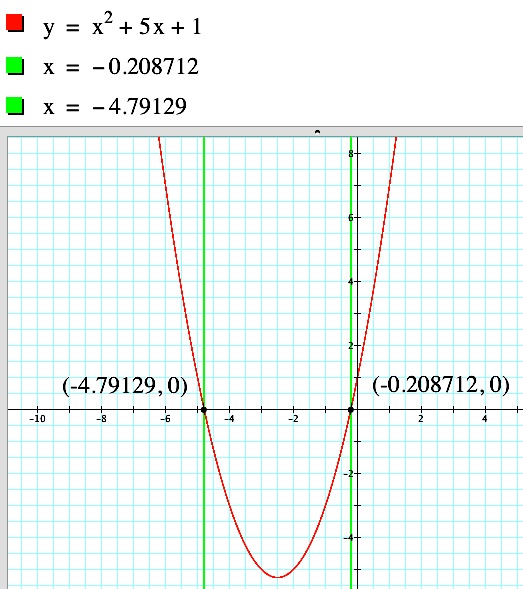 |
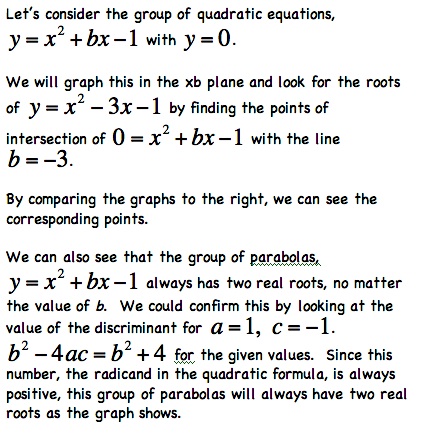 |  | 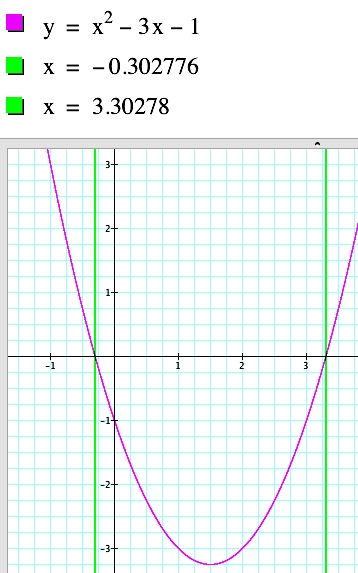 |